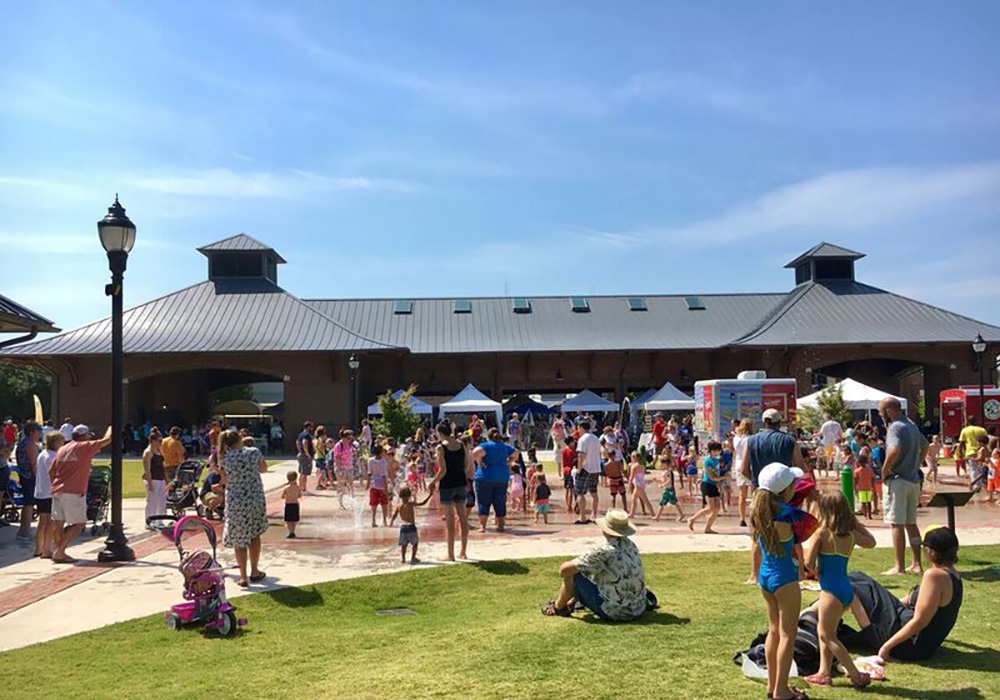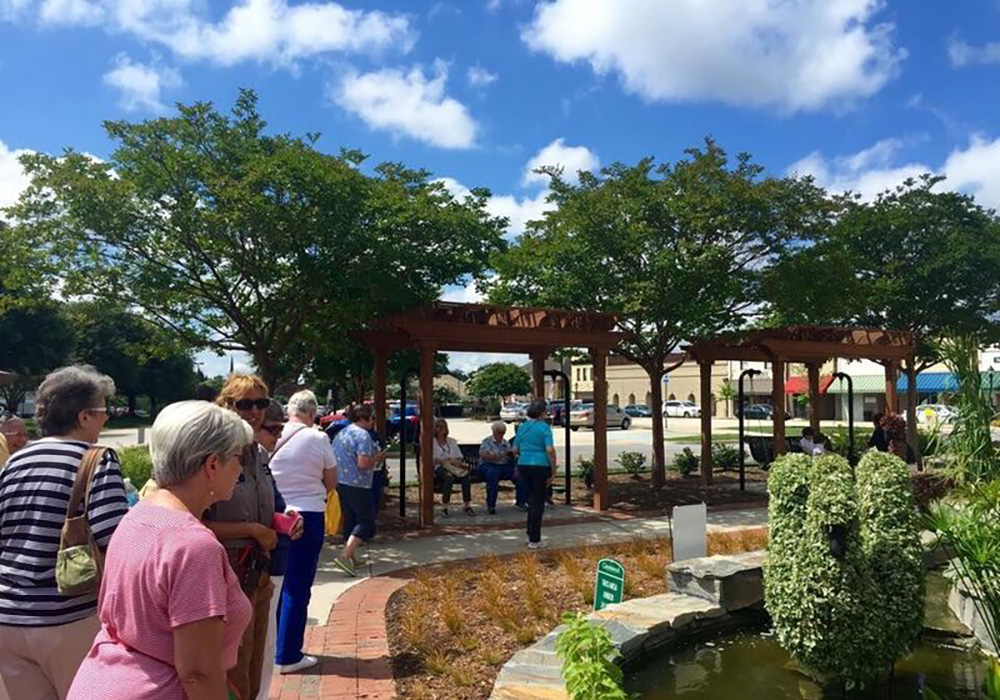Uptown Greenwood: Greenwood, South Carolina
Planning Excellence
The story of Greenwood, South Carolina, is one familiar to many small cities. For years, Uptown Greenwood was a railway depot with multiple rail lines serving as the anchor for Main Street and the city's lifeblood. When the railroads left in the 1980s, the tracks were removed, leaving a four-lane stretch of pavement that divided the city center.
Instead of bemoaning its loss, Greenwood saw an opportunity to reinvent itself. City planners began to develop a new strategy to revitalize Uptown and transform its nearly 500-foot-wide stretch of asphalt into a commercial hub for the city of Greenwood and surrounding communities. Using tactics large and small, the city created an inviting space for its residents and private investment.
The loss of the railroad and growth of a "bypass" commercial district had led to a decline in the number and variety of business establishments in the city core. In 2003, a City Center Master Plan was created to provide a vision for a mixed use urban core, and recommendations from the plan were effectively implemented throughout the subsequent years.
Main Street itself was reduced in size with greenery taking the place of some of the former railroad rights-of-way. New brick-lined sidewalks and the installation of street furniture helped to highlight the historic nature of Uptown while also providing a more inviting environment for pedestrians. These smaller-scale renovations, coupled with the creation of a Municipal Improvement Tax District, helped attract shoppers and private investments alike, creating a multi-purpose destination.

Activity at the Uptown Market splash pad during the South Carolina Festival of Discovery craft show. Photo courtesy City of Greenwood.
By thinking big, the city reemerged as a regional hub, overcoming the challenge of forging a sense of community in an area once divided by hundreds of feet of railroad tracks, then hundreds of feet of blacktop. By modernizing downtown — including free WiFi — while keeping an eye on the historic character of Main Street, Uptown Greenwood embodies its mission of "Embracing the future and preserving the past."
Since Uptown Greenwood's recognition as a Great Place, the neighborhood also earned the designation as a cultural district — one of eight recognized in South Carolina.
Defining Characteristics and Features
- The Uptown Market, an open-air farmers' market located on a premium Uptown corner, was completed in 2016 and now provides a space for retail, recreation, and community events.
- Greenwood was awarded a national award through the America in Bloom program for Floral Displays for Uptown's summer Signature Topiary Display.
- Mini parks have been added to the streetscape, and the city's horticultural experts tend to the planter islands, hanging baskets, fountains, and pockets of vegetation in Uptown Greenwood.
- Greenwood became a Bee City USA community in 2017 and has embraced the designation with the planting of six pollinator gardens.
- Historic murals have been uncovered and preserved.
- Regular events open to the public include antique automobile rallies, an annual Festival of Discovery (an annual barbeque and blues festival), the South Carolina Festival of Flowers, races and marathons, outdoor concerts and local music festival, and a variety of holiday-centered events.
- The Emerald Triangle, a thriving state-recognized cultural arts district, anchors the northern boundary of Uptown with a 25,000-square-foot multipurpose Arts Center. It contains a 300-seat community theater and museum with hands-on exhibits of science, history, and natural history, including a historical railroad center with seven railcars.

Children attend a field trip and performance at the Greenwood Community Theatre. Photo courtesy City of Greenwood.
By the Numbers
- 15 major events held annually that bring upwards of 100,000 visitors to Uptown businesses
- 3,600-square-foot interactive water feature for children and adults
- 490 feet once separated the two sides of Main Street before the redesign
- 290 percent increase in hospitality tax revenue in the Uptown area from 2008 to 2016
Designated Area
Uptown is 82 acres of commercial, residential, and public space centered around the stretch of Main Street south of Seaboard Avenue and north of Court Avenue East, and expands several blocks east and west.

A tour group learns about topiaries during the South Carolina Festival of Flowers. Photo courtesy City of Greenwood.


